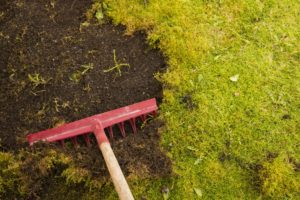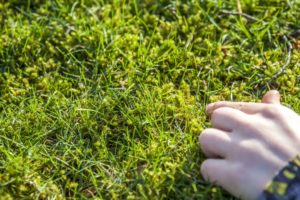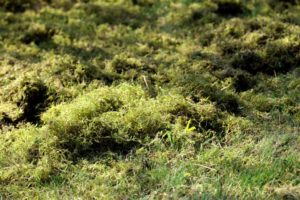Every lawn has some moss. It is a product of its environment and can grow almost anywhere, but prefers moist, shady, acidic soil. It always looks worse in the early spring and the fall as grass is either coming out of or going into dormancy. Moss continues to grow and thrive in cold temperatures and underneath snow whereas grass does not, so don’t be discouraged when it seems out of control before the grass greens and thickens up for the season. Soon, grass will overcrowd and cover the moss and it’ll seem like it was never there.



There are a few solutions to moss problems. The simplest is to balance the pH level of the soil with a lime application. Off-setting the perfect environment for moss can lessen its chance of spreading. Fertilizing regularly keeps the grass fed and strong, which means less room for moss. Aerating and overseeding helps break up moss patches while maintaining turf grass thickness throughout the seasons.
In extreme cases, raking the moss out and filling the area in with grass seed is the most straightforward option. This is best done in the fall as grass roots are still fragile and weak in the spring and raking may cause damage to the lawn. Not to mention, fall seedings yield much more predictable results. There are “moss killer” products available at home improvement stores but we do not recommend using them as they will only turn the moss black and homeowners will still need to rake it up and replace it with seed.
